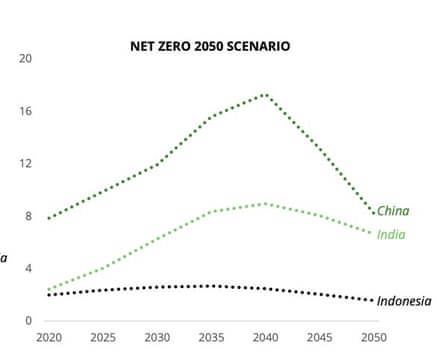Helping Taiwanese businesses strengthen cross-border dispute response strategies amid rising geopolitical risks
The “2025 Taiwan Arbitration Week: Geopolitics and Arbitration Conference,” co-hosted by the Chinese Arbitration Association, Taipei (CAA) and Baker McKenzie Taipei, takes place on 5 November in Taipei and 6 November in Kaohsiung. Through the theme of “Geopolitics and Arbitration,” the event invites Taiwanese businesses with overseas operations that may face cross-border disputes to engage in in-depth discussions on how arbitration can serve as a critical tool for corporate risk management and international dispute resolution amid global uncertainties.
The conference features international arbitration experts from Baker McKenzie’s offices and member firms in Taipei, Singapore, Hong Kong and Malaysia, sharing the latest arbitration trends and practical case studies to help businesses navigate turbulent global political and economic conditions while minimizing legal risks.
________________________________________
As geopolitical risks escalate, arbitration becomes a corporate stabilizer
Amid supply chain reorganization and heightened geopolitical tensions, arbitration agreements have become essential tools for businesses to reduce cross-border risks and ensure transaction stability. Anna Hwang, executive partner at Baker McKenzie Taipei, notes:
“Baker McKenzie conducts annual predictions and analyses of global dispute cases. Both the 2025 and 2024 forecasts indicate that geopolitical risks will continue to dominate corporate dispute types, including supply chain disruptions, artificial intelligence, ESG issues and post-M&A integration. Businesses should prioritize arbitration as their dispute resolution mechanism and maintain commercial thinking during disputes — this is the key strategy for risk reduction and maintaining stability.”
________________________________________
Investor-state disputes: Arbitration safeguards in overseas expansion
When facing trade wars and geopolitical pressures, businesses should leverage international investment agreements for protection. Tony Tang, partner at Baker McKenzie Taipei, states:
“As businesses adjust their overseas strategies in response to trade wars and geopolitical pressures, political risks associated with the host country pose major challenges to corporate risk management capabilities. Through proper investment structure design and ensuring that overseas investments are covered by appropriate international investment agreements, businesses can ensure that investment disputes with host countries will be resolved through neutral, professional and effective international arbitration — a key strategy for avoiding unlawful interference and protecting overseas investment interests.”
________________________________________
Renewable energy and arbitration: Legal defense for high-risk industries
Energy transition presents tremendous opportunities, but also significant risks. Tom Chou, senior consultant at Baker McKenzie Taipei, points out:
“Post-pandemic renewable energy projects face heightened supply chain and price volatility risks, underscoring the need for enforceable financial guarantees, price adjustment mechanisms and strict adherence to cross-border contract terms — even amid sudden market changes such as polysilicon price surges. Stable and long-term electricity price guarantees are crucial for attracting renewable energy investment; retroactive changes to such systems by governments may expose them to expensive international arbitration disputes.”
________________________________________
Dispute boards: Prevention-over-resolution strategic thinking
Dispute boards have proven highly effective in international engineering and large-scale projects, and they are increasingly becoming important tools for corporate risk prevention. Chien-Hung Lai, partner at Baker McKenzie Taipei, states:
“Dispute boards can proactively manage risks, enhance efficiency and cooperation, and encourage early dialogue between parties — achieving dispute prevention, more focused arbitration and cost reduction. With successful track records in both Taiwan and internationally, they are worthy of incorporation into corporate contract management and dispute resolution strategies.”
________________________________________
Post-award challenges: Procedural understanding and risk control
Arbitration awards are not the end of dispute resolution. Terrence Wang, associate at Baker McKenzie Taipei, points out:
“In today’s tightly interconnected yet uncertain global supply chain environment, arbitration has become an important tool for resolving cross-border commercial disputes. However, after an arbitration award is rendered, businesses in Taiwan still face two important procedures: first, actions to set aside arbitration awards; and second, applications for the recognition of foreign arbitration awards. Understanding and effectively utilizing these follow-up mechanisms is critical for ensuring stable operations in global supply chains, cross-border investment decisions and prevention of potential legal risks.”
________________________________________
Cross-cultural arbitration strategies: Practical insights from Singapore, Hong Kong and Malaysia
Partner Chien-Hung Lai states:
“With its neutrality, credibility and flexibility, arbitration has become the preferred mechanism for managing cross-border disputes in today’s geopolitical world. When Taiwanese businesses expand overseas, they must develop a deep understanding of local cultures and business practices, tailor arbitration clauses accordingly, and carefully select arbitration seats — these are key to effective risk management and enhancing contract enforceability.”
Baker McKenzie’s specialists from Singapore, Hong Kong and Malaysia share distinctive features of each jurisdiction’s arbitration system, along with practical recommendations to help Taiwanese businesses effectively utilize arbitration mechanisms in overseas operations. Tjen Wee Wong, principal at Baker McKenzie Wong & Leow in Singapore, states:
“Singapore arbitration and the Singapore International Arbitration Centre are among the world’s top choices for dispute resolution, offering high enforceability, efficiency and neutrality. The 2025 rules emphasize procedural simplification, reasonable cost structures and accelerated timelines, aiming to provide effective, flexible and internationally recognized arbitration outcomes.”
Philipp Hanusch, partner at Baker McKenzie Hong Kong, notes:
“Hong Kong’s arbitration system offers multiple advantages for Taiwanese businesses. It features a modern arbitration law framework based on the UNCITRAL Model Law, along with diverse arbitrator selection and neutral courts that support arbitration and respect party autonomy. Both English and Chinese are its official languages. Notably, if a Hong Kong arbitration is administered by the Hong Kong International Arbitration Centre or other designated institutions, parties can apply to Chinese Mainland courts for interim measures, which are then directly enforceable in the Chinese Mainland.”
Janice Tay, partner at Wong & Partners in Malaysia, states:
“Malaysia’s arbitration system is built on a modern legal framework that meets international standards, particularly the UNCITRAL Model Law. Supported by the Asian International Arbitration Centre and reinforced by a pro-arbitration judiciary, the system offers efficient, flexible and cost-effective procedures, making Malaysia a trusted strategic hub in Asia for handling complex cross-border disputes.”
________________________________________
Arbitration is the legal foundation for Taiwanese businesses’ global expansion
This conference not only presents the latest arbitration trends and practical case studies but also highlights arbitration’s critical role amid rising geopolitical risks. Through contract design, treaty planning and system selection, Taiwanese businesses can establish robust legal defenses in the global market. Executive Partner Anna Hwang emphasizes, “Arbitration clauses are not just part of contracts — they are key to maintaining stability and flexibility for businesses in an uncertain world.”









